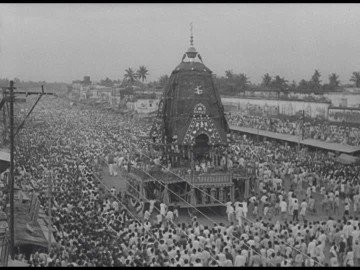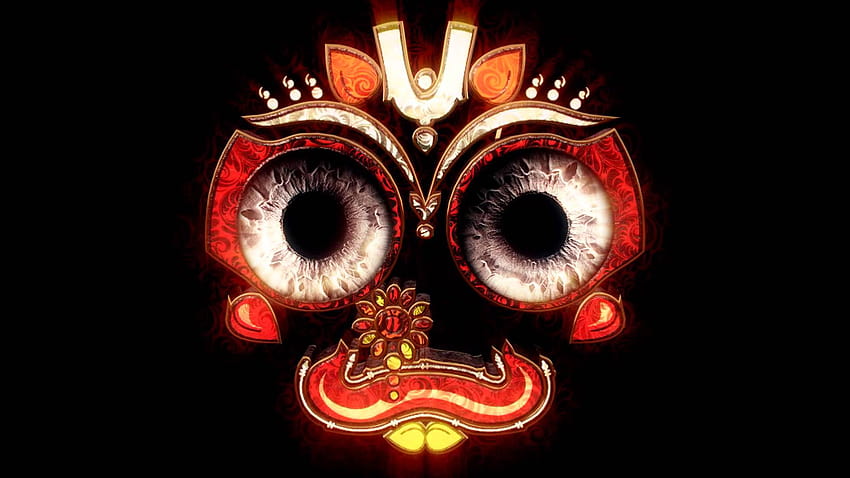| RATH YATRA | |||
|---|---|---|---|
|
Ratha Yatra or chariot festival, is any public procession in a chariot.They are held annually during festivals in India, Nepal and Sri Lanka. The term also refers to the popular annual Ratha Yatra of Puri. that involve a public procession with a chariot with deities Jagannath (Vishnu avatar), Balabhadra (his brother), Subhadra (his sister) and Sudarshana Chakra (his weapon) on a ratha, a wooden deula-shaped chariot.
Ratha Yatra processions have been historically common in Vishnu-related (Jagannath, Rama, Krishna) traditions in Hinduism across India, in Shiva-related traditions, saints and goddesses in Nepal, with Tirthankaras in Jainism, as well as tribal folk religions found in the eastern states of India. Notable Ratha Yatras in India include the Ratha Yatra of Puri, the Dhamrai Ratha Yatra in Bangladesh and the Ratha Yatra of Mahesh. Hindu communities outside India, such as in Singapore, celebrate Ratha Yatra such as those associated with Jagannath, Krishna, Shiva and Mariamman. According to Knut Jacobsen, a Ratha Yatra has religious origins and meaning, but the events have a major community heritage, social sharing and cultural significance to the organizers and participants. |
 |
||
|
THE CHARIOTS OF TRADITION
The three chariots of Jagannath, Balabhadra and Subhadra are newly constructed every year with wood of specified trees like phassi, dhausa, etc. They are customarily brought from the ex-princely state of Dasapalla by a specialist team of carpenters who have hereditary rights and privileges for the same. The logs are traditionally set afloat as rafts in the river Mahanadi. These are collected near Puri and then transported by road. The three chariots are decorated as per the unique scheme prescribed and followed for centuries stand on the Bada Danda, the Grand Avenue. The chariots are lined across the wide avenue in front of the temple close to its eastern entrance, which is also known as the Sinhadwara or the Lion's Gate. Around each of the chariots are nine Parsva devatas, painted wooden images representing different deities on the chariots' sides. Each chariot has a charioteer (Sarathi) and four horses. THE GRAND 7 DAY CELEBRATIONPreparations for Ratha Yatra 2024 Ratha Yatra 2024 is being planned months in advance, with artisans building the enormous chariots for the gods. Every year, each chariot is constructed from scratch utilizing particular wood species and customary blueprints. The largest chariot belongs to Lord Jagannath and is named Nandighosa. Taladhwaja belongs to Balabhadra and Darpadalana to Subhadra. The Chariot Festival: Day One In a custom known as Pahandi, the gods are ceremoniously taken out of the Jagannath Temple on the day of the Ratha Yatra. Devotees are dancing and chanting in the streets during this colorful and joyful celebration. After that, the gods are mounted on their appropriate chariots and prepared to travel to Gundicha Temple. The Chariot Festival Ratha Yatra Day One The Journey to Gundicha Temple The Journey to Gundicha Temple The atmosphere is electrifying with excitement and dedication as thousands of devotees pull the chariots. There is singing, dancing, and nonstop hymn chanting during the three-kilometer trek to Gundicha Temple. The yearly pilgrimage of Lord Jagannath and his siblings to their birthplace is represented by this procession. Gundicha Temple and the Nine-Day Sojourn Upon reaching Gundicha Temple, the deities are welcomed with elaborate rituals. They stay at the Gundicha Temple for nine days, during which various religious ceremonies and cultural events take place. This period is known as the Gundicha Yatra, where devotees can offer prayers and seek blessings from the deities. Ratha Yatra 2024 Gundicha Temple and the Nine-Day Sojourn Bahuda Yatra The Return Journey of Ratha Yatra Bahuda Yatra: The Return Journey Nine days later, the gods set out on the Bahuda Yatra, a trek back to the Jagannath Temple. Devotees drag the chariots back to their original abode in this equally magnificent event. For the devotees, the trip back is a time of great joy and celebration. Suna Besha: The Golden Attire At the Ratha Yatra event, the Suna Besha, where the gods are decked out in gold jewelry and decorations, is one of the highlights. The day following the gods’ return to the Jagannath Temple is when this magnificent ceremony takes place. The finale of the Ratha Yatra celebrations is the stunning sight of the deities dressed in gold, drawing thousands of devotees. |
|||
 |
 |
 |
 |
HOME | |||